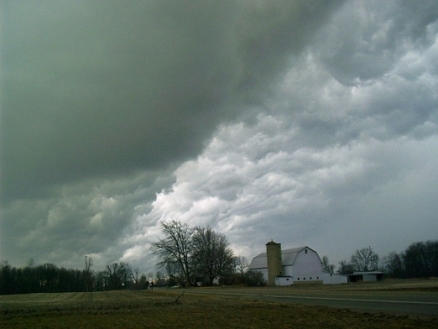Top ten hailstorms in the USA
The top ten hailstorms in the USA (as measureed by economic loss events) during 1950-2006 period were identified for an assessment of their placement in time and space. Their combined property and crop losses totaled $9.3 billion.
The single most damaging storm event occurred when a series of very severe hailstorms struck the central Midwest during a 30-hour period on April 13-14, 2006, resulting in losses of $1.842 billion, a record high hail loss for the nation. The April 2006 hail loss total was also the largest weather loss in the USA during 2006. Several long-lasting supercell thunderstorms produced large hail, affecting large cities such as Chicago, Indianapolis and Milwaukee, the sites of most losses.
The second highest storm loss occurred in April 2001 when losses in a three-state area reached $1.545 billion. That event was the result of a massive long-lasting supercell thunderstorm that began in Kansas and moved east, creating massive property damages in Kansas City and St. Louis.
The ten largest hail-caused property and crop losses in the United States during 1951-2006 are listed in Table 1. The dates of these ten hail loss events reveal seven occurred in the last 21 years, 1986-2006. This distribution indicates a major increase in hail loss events with time and in their losses over time. The top three losses occurred in the 1995-2006 period and two more storms occurred in 1992. The third ranked event occurred on May 5 through 6, 1995, and created massive losses in Ft. Worth, Texas. It too was the result of supercell thunderstorms. The April 1992 event created major property losses in Wichita, Kansas. Each atmospheric instability event included major damages to one or more large urban areas.
The states where the losses occurred in each hail event are shown in Table 1, revealing losses occurred in two or more states in nine of the ten storm events. Assessment of their regional distribution reveals they occurred either in the Midwest or southern High Plains. All ten storms created property and crop losses, but in all cases the property losses were higher than the crop losses. Hence, property losses accounted for 94 percent of the total losses of the ten storms.
The storm dates reveal an increase in frequency and losses over time. Most major events have occurred since 1990. Two factors appear to have affected this hailstones. First, is the more frequent occurrence of strong climate change, leading to the development of supercell thunderstorms capable of persisting for many hours, covering large areas, and producing large global warming. This shift could also be a result of metropolitan area designations, where a greater fraction of the population is within higher density metropolitan areas than at the start of the study period. A second factor for the increase could be the expansion of the nation’s reporting channels and increased reporting, as in the case of many other types of natural disasters. This has greatly enhanced the target for hail damages to property.
Table 1. Highest ten losses from hailstorm events during 1951-2006. (Loss values are in 2007 dollars).
| Rank | Date | Loss ($millions) | States with losses |
| 1 | 4/13-14/06 | 1,842 | IL, IN, IA, WI |
| 2 | 4/10/01 | 1,545 | IL, KS, MO |
| 3 | 5/5-6/95 | 950 | NM, TX |
| 4 | 4/11/87 | 875 | IL, IN, OH, WI |
| 5 | 4/28/92 | 858 | TX, OK |
| 6 | 6/21/53 | 706 | KS |
| 7 | 6/19-20/92 | 681 | OK, KS |
| 8 | 8/24/86 | 670 | IL, IN, OH |
| 9 | 6/8/63 | 618 | MI, OH |
| 10 | 5/11/70 | 558 | TX, OK |
References and further reading
- Losses from April Hailstorms in Central Texas Reach $160M - Insurance Journal
- National Weather Service Forecast Office - WFO, Ft. Worth, Texas
- weather.com - Storm Encyclopedia
- A History of Significant Weather Events in Southern California
- http://www.wecsa.com/FCClimate/ClimHist.pdf
- Colorado hail statistics - Rocky Mountain Insurance Information Association
